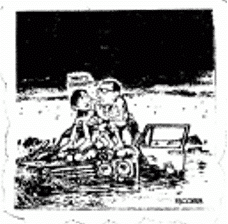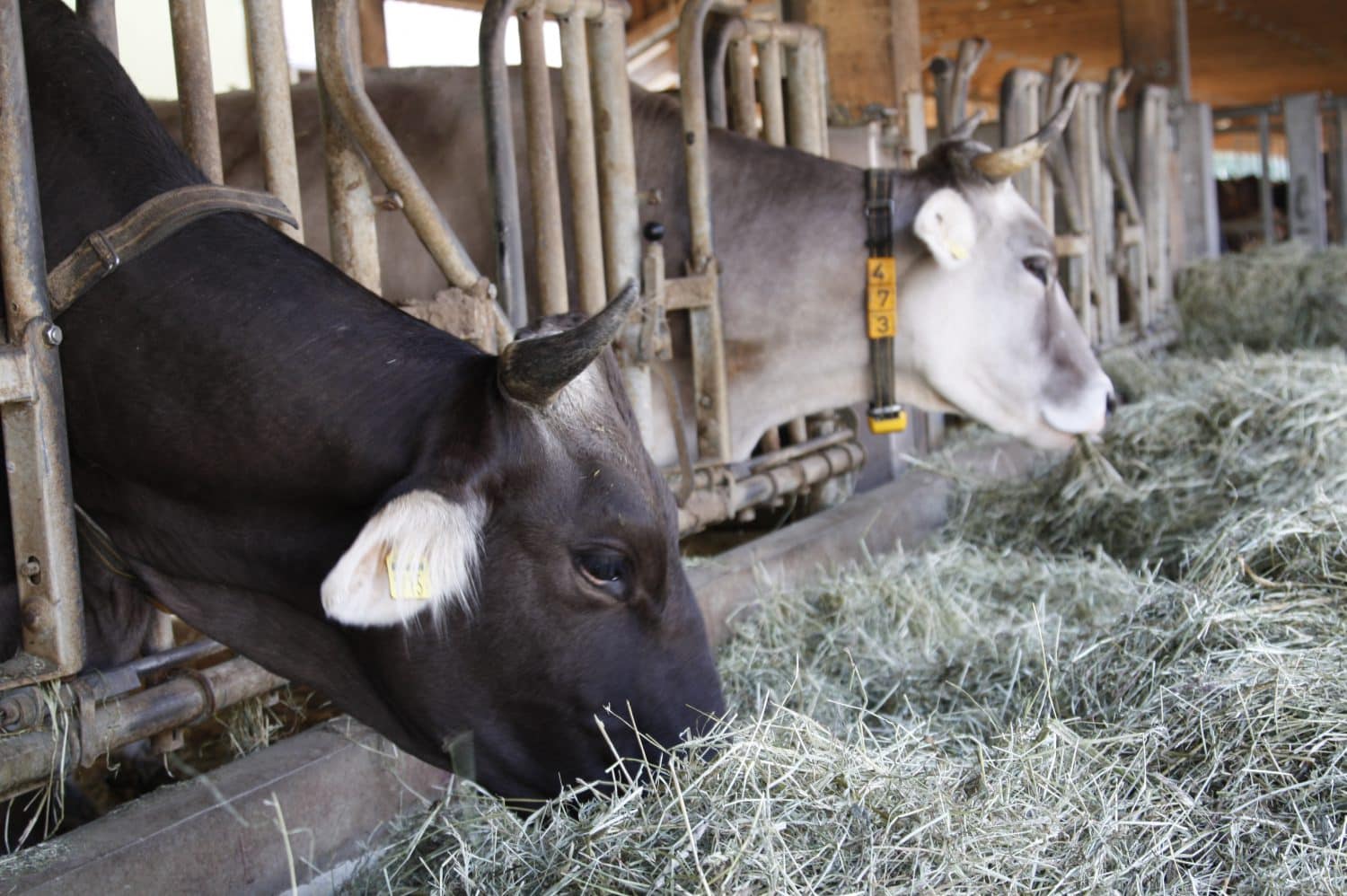Take home message
- The plastic soup we know from the oceans and rivers is the visible part of the plastic problem.
- A more hidden problem is microplastics. Researchers at the VU-Amsterdam have mapped the problem areas for pig and dairy farming in a small pilot.
Persistent plastic microparticles
Researchers at the VU-Amsterdam, connected through the “Plastic Soup Foundation” have looked at, where plastic is found in our food. In a pilot, samples were taken from meat, milk, roughage and concentrates. They looked at micro-plastics, i.e. plastics that can pass the intestinal wall, then find their way into the body and are detectable in muscles (meat), but also in milk. Be aware, both the intestinal tract, bloodstream and udder should act as a kind of filter to stop larger molecules. Residual microplastics are degradation products of plastic polymers. The researchers have taken a limit of 700 nm to define, that it is a plastic particle (microplastics). Of course, these are very small particles. In 1 millimetre (mm) fit 1 million nanometres, or in other words 1 nm = 10-9 metres (one billionth of a metre). The length of an E.coli bacterium is about 2µm (two mu-metres). 1 µm = 10-6 metres (one millionth of a metre). Viruses are smaller than bacteria and can fit tens to hundreds of times inside an average bacterium. So the measure of microplastic in blood, milk and meat is that there are 3 plastic particles in one E.coli bacterium, quite large still. And many times larger than viruses.
Livestock and microplastics
The study was conducted with Dutch products (Van der Veen et al., 2022). These microplastics are polymers, such as polyethylene (PE), polyvinyl chloride (PVC-P), polymethyl methacrylate (PMMA), polypropylene (PP) and polymers of styrene (Styr-P), among others. Microplastics are found in 80% of meat and dairy products tested. This includes pork, beef, blood from farm animals, milk and concentrates. A notable exception is cow roughage, which is free of microplastics. Over 70% of the milk samples (packaged, tank or hand-milked from the udder) contained microplastics, in 68% they were PMMA, better known as Acrylic, Plexiglas or Perspex. Other plastics were mostly found in singles. Four out of five tank milk samples contain a microplastic, mostly just PMMA. The dairy farm with the highest PMMA concentration delivered the only tank milk sample with high PVC-P and PE concentrations.
All the cows’ blood (100%) contained microplastics, just not PMMA, but PVC-P, PE and STYR-P. All other feed (concentrate) contained microplastics in the form of PVC-P and PE (100%) or as STYR-P (75%). Thus, concentrate feed is an important source of microplastics. Through the concentrate feed, microplastics end up in the blood of cows. There is not always a consistent difference between samples of organic or conventional origin. Sometimes an organic sample is extremely high in certain microplastics.
Table 1. Range (low-high) of microplastic concentrations in a sample of Dutch agricultural products (milk, meat), feed and blood from cows (concentration in µg/g). Free = below detection limit, classified as ‘none’; > means more than.
| PVC-P | PE | Styr-P | PMMA | PET | PP | |
| Concentrates | 339 – >2600 | 223 – >2400 | 39 – 740 | none | none | none |
| Roughage | none | none | none | none | none | none |
| Blood | 1.2 – 6.1 | 0.22 – 2.9 | 0.09-1.5 | none | none | 0.08 – 0.41 |
| Milk | 6.1 – 13.0 | 21.5 | none | 0.11 – 1.2 | 0.9 | none |
| Meat | 127 | 150 – >7700 | 77 – 200 | none | none | none |
Impact for livestock industry?
In theory, you could avoid microplastics if cows only eat grass and hay. Grass is grazed and hay is sun-dried, or roof-dried roughage, which does not come into contact with any kind of plastic. The study does not elaborate on farm systems, but you can deduce, that if milk is produced from grass and hay, and if you only feed concentrates from whole products (oats/barley flakes/meal and peas/beans scrap/meal), then it is impossible for cows to come into contact with microplastics. Compound concentrates, which contain residual products, are best avoided. Concentrated feed is the biggest source of microplastics in dairy farming, oddly enough even organic.
What’s ecology?
There was a picture in a Utrecht student magazine in the 1970s. Two men sit in despair on an old, rusty car in the middle of a flooded area and one asks the other: ‘what is ecology?’ The term ‘ecology’ was new 50 years ago, as was Rachel Carson’s book ‘Silent spring’. Carson described the tragic problem of undegradable chlorocarbon compounds for top predators, substances all man-made. They were initially DDT, dieldrin and aldrin, pesticides that suppliers said were harmless when used. They had one problem, namely that the substances degrade very slowly and continue to circulate in the environment (and still detectable in our blood) for decades.

That is the common of PFAS (per- and polyfluoroalkyl substances), DDT and plastic: it breaks down so badly. New in anno 2020 is the measurement of micro-plastics, but the results of the VU study are in line with expectations and in line with the other persistent chemicals: one finds them for years in the food chain and the environment.
If you really want to farm ecologically, you should only use substances, which can be absorbed into the life cycle and used and degraded entirely. Many human inventions known as ‘adjuvants’ took on a negative appearance over time: there were quite a few persistent chemicals among them. What’s ecology? So ecology is: thinking in systems, in which natural substances in the system can be used, re-used and converted. In any case, the substances mentioned, which are persistent, do not do so and are potentially a danger to life.
Plastics do not fit into the cycle of construction and decomposition and must be replaced by natural materials, or they must be abandoned. Entire ecosystems are ruined by plastic waste and it is not unlikely, that male fertility declines partly due to such endocrine disruptors as plastics. In any case, sperm concentrations are decreasing more and more rapidly over the decades (Levine et al., 2022). Fertility disruption has also been found in Scandinavian women in relation to persistent chemicals (endocrine disrupting chemicals), such as PFAS, biphenols (PCBs) and phthalates. The former are known from Tefal pans and raincoats, the latter as PVC plasticisers (Bellavia et al., 2023).
Literature
- Bellavia, A., Zou, R., Björvang, R. D., Roos, K., Sjunnesson, Y., Hallberg, I., … & Damdimopoulou, P. (2023). Association between chemical mixtures and female fertility in women undergoing assisted reproduction in Sweden and Estonia. Environmental Research, 216, 114447.
- Carson, R. (2009). Silent spring. 1962.
- Levine, H., Jørgensen, N., Martino-Andrade, A., Mendiola, J., Weksler-Derri, D., Jolles, M., … & Swan, S. H. (2022). Temporal trends in sperm count: a systematic review and meta-regression analysis of samples collected globally in the 20th and 21st centuries. Human Reproduction Update.
- van der Veen, I., van Mourik, L. M., van Velzen, M. J. M., Groenewoud, Q. R., & Leslie, H. A. (2022). Plastic Particles in Livestock Feed, Milk, Meat and Blood.




